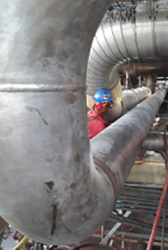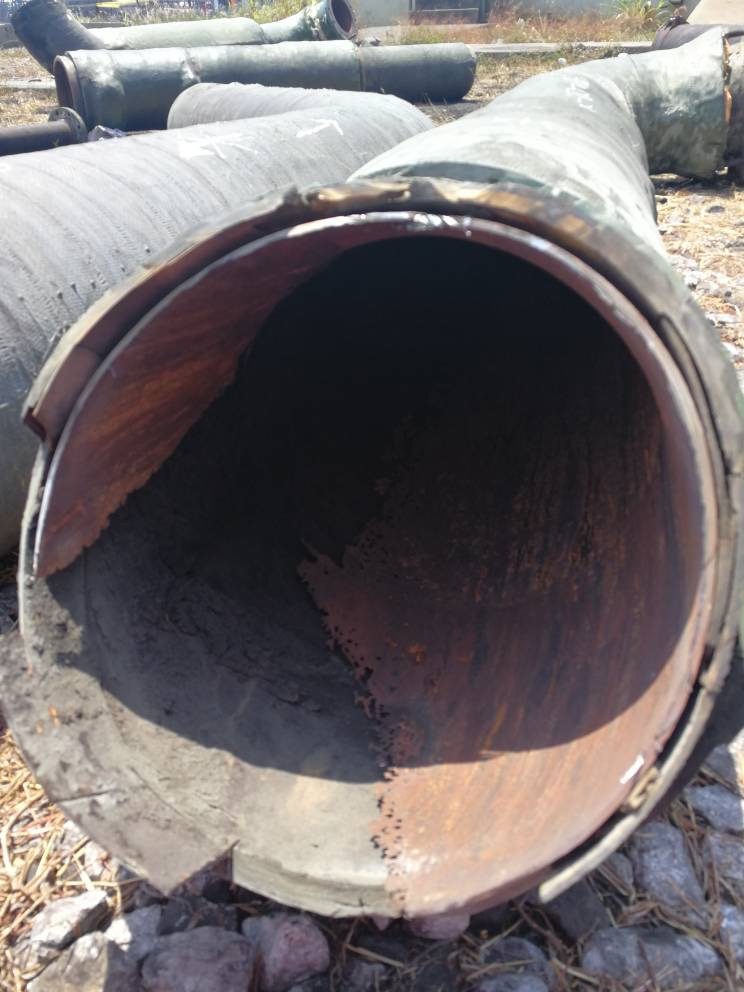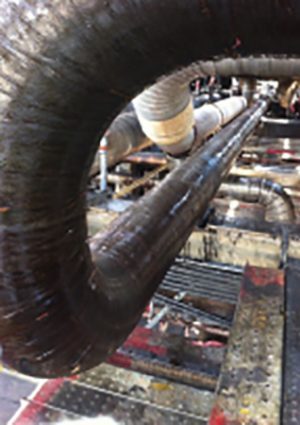Venezuela
PIPE DETAILS
- 304.8-mm (12-inch) diameter naphtha line with internal corrosion over 94 meters (308 feet)
- Many T’s and elbows along the length of the line
- 176.7° C (350° F) operating temperature/ Installed at 76.7° C (170° F)
- 4.8 bar (70 psi) design pressure
Summary
- 8-mm (12-inch) diameter naphtha line had sustained extensive internal corrosion
- A vertical length of 94 meters (308 feet) with T’s and elbows required repair
- CSNRI trained technicians installed the DiamondWrap® repair to restore line integrity
- A team of 8 installers repaired 101 damaged areas in 1 month
- The DiamondWrap® system allowed proper curing at 76.7° C (170° F)
- The high-pressure, high-temperature line remained in service during repair
- No hot work was required for the installation
- No negative impact on refinery operations
- Solution enabled additional 4 years of safe service.
A facility owner discovered damage on a 304.8-mm (12-inch) diameter naphtha line that was part of a system that ran from a pumping station up a tower to several other pumping and refining stations. The piping had experienced internal corrosion from the bottom station up the entire tower – a distance of 94 meters (308 feet) that included many tees and elbows.
Recognizing that the naphtha refining process was at risk of causing a major shutdown and could create an environmental hazard, the owner began looking for a quick and reliable repair.
A team of CSNRI engineers designed repairs for each geometry for a 25.4-mm (1-inch) through-wall hole according to ASME PCC-2 Article 4.1, and recommended a DiamondWrap® repair solution. This was the ideal approach because of the varied challenges along the length of the line, which included bends and complex geometry as well as areas with limited clearance. A total of 101 kits of the composite system were required to repair the full length of the corroded line.


When the repair kits arrived on site, a team of 8 CSNRI trained and certified installers began work on the line. The first step was to mechanically prepare the line using a Bristle Blaster. With the line properly prepared, installers began layering the carbon fiber over the repair areas according to the repair plan, wrapping the line, including the tees, bends, and elbows.
The installation was carried out with the line temperature at 76.7° C (170° F). The high temperature would have negatively affected most composite cures, but the DiamondWrap® system is designed for high-temperature applications and allowed the cure to be managed properly.
It took a team of 8 installers a month to completely wrap the pipe. During the installation process, no heavy equipment was introduced, and no hot work was required, allowing the line to remain in operation with no disruption in production. Despite the extensive corrosion and difficult installation conditions, the team completed the job without incident and returned the line to safe service.
This line remained in service under demanding conditions for 4 years before the refinery owner took it out of service during a turnaround. The inspection completed at that time revealed that a 203.2-mm (8-inch) wide slot of steel was missing underneath the composite. Although the repair was designed for a 25.4-mm (1-inch) through-wall hole, it had effectively sealed a defect 8 times that size, creating a “new pipe,” and had performed flawlessly, providing safe and reliable service well beyond the owner’s expectations.


